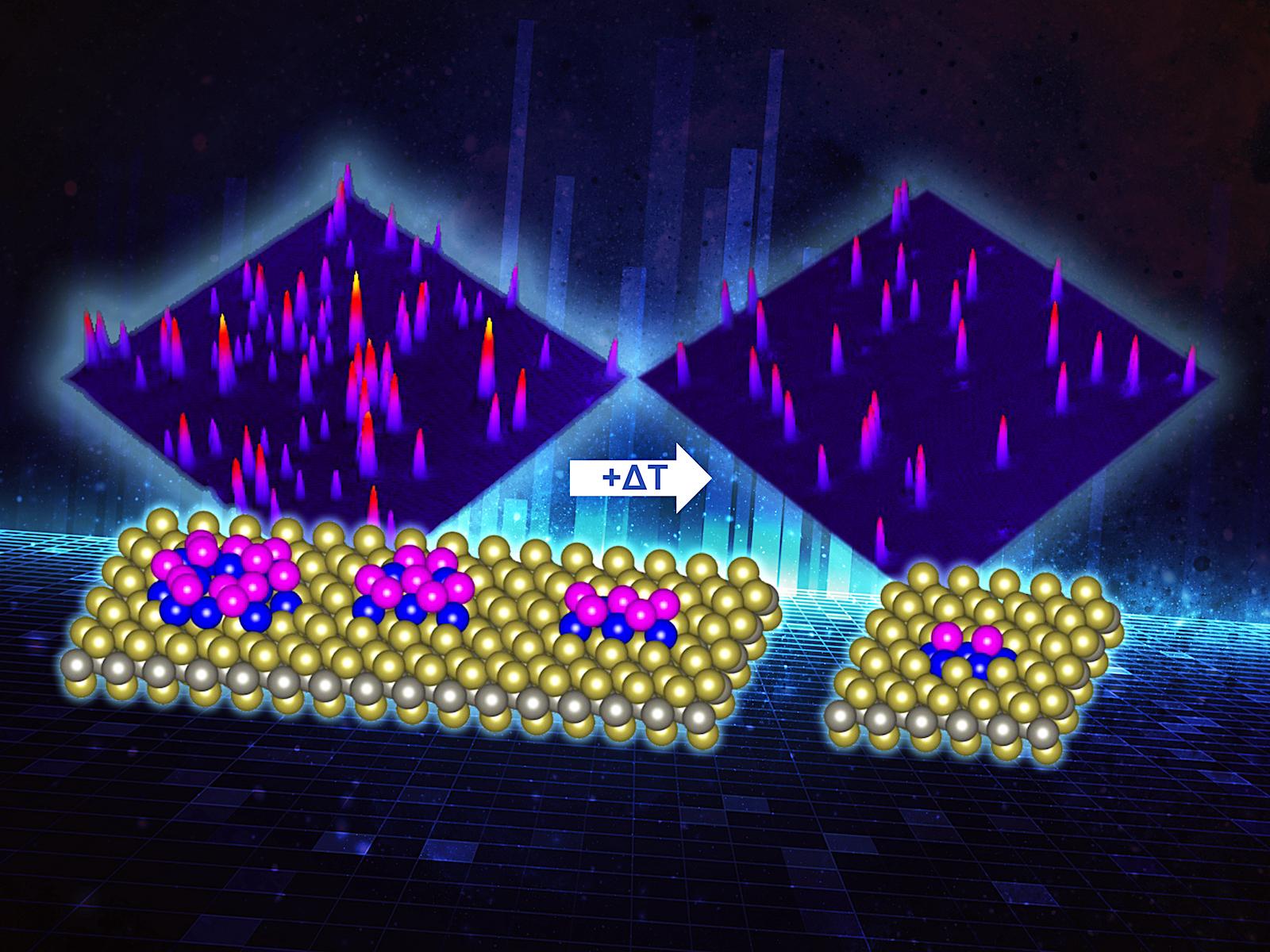Making Identical Nanoparticles Stick
Researchers elucidate pathway that generates stable, identical particles

Researchers at Pacific Northwest National Laboratory demonstrated a method to create stable and identical nanoparticles of a superconducting TMD material through annealing after nucleation.
(Image by Nordroden | istock)
The Science
The ability to control advanced materials, such as transition metal dichalcogenides (TMDs), at the atomic scale is a crucial part of developing and deploying the next generation of quantum devices and catalysts. However, little is known about how TMDs interact with metals that are of interest as electrical interconnects, magnetic domains, and in catalysts as catalytically active centers. Generally, it is assumed that two-dimensional Van der Waals materials, such as TMDs, are only weakly interacting. Therefore, metals will simply nucleate on structural imperfections, such as missing surface atoms, which are also called defects. A team of researchers at Pacific Northwest National Laboratory investigated the interactions of a prototypical system, palladium (Pd) metal on a tungsten tellurium TMD (WTe2), only to discover how different the reality can be.
The Impact
The researchers demonstrated a simple method to create stable, identical nanoparticles of PdTe2-like composition, which is known to besuperconducting on a WTe2 TMD support. This approach provides a path toward the realization of size-selected nanostructures for quantum devices and selective catalytic conversions.
Summary
Using scanning tunneling microscopy imaging, X-ray photoemission spectroscopy, and ab initio simulations, the researchers found that palladium (Pd) nucleation is driven by the interaction with, and the availability of, mobile excess tellurium (Te) leading to the formation of Pd-Te clusters at room temperature. Surprisingly, the nucleation of Pd-Te clusters was not affected by intrinsic surface defects, even at elevated temperatures. Upon annealing, the Pd-Te nanoclusters adopted an identical nanostructure and are stable up to ~523 K. Density functional theory calculations provided a foundation for understanding of the mobility of Pd and Te atoms, preferential nucleation of Pd-Te clusters, and the origin of their annealing-induced monodispersity. These results highlight the role the excess chalcogenide atoms and lattice corrugation strain may play in the metal deposition process. More broadly, the discoveries of synthetic pathways yielding thermally robust monodispersed nanostructures on TMDs are critical to the manufacturing of novel quantum and microelectronics devices in addition to catalytically active nano-alloy centers.
Contact
Zdenek Dohnálek, zdenek.dohnalek@pnnl.gov, (509) 371-6150
Funding
The experimental part of this work was supported by the Chemical Dynamics Initiative/Investment, under the Laboratory Directed Research and Development program at Pacific Northwest National Laboratory. Initial experiments were supported by the Department of Energy (DOE), Office of Science (SC), Basic Energy Sciences (BES) program, Chemical Sciences, Geosciences, and Biosciences Division, Catalysis Science program. Computational modeling was supported by the DOE SC BES, Materials Sciences and Engineering Division, Synthesis and Processing Science Program. This research used resources of the National Energy Research Scientific Computing Center, a DOE SC user facility. PNNL is a multi-program national laboratory operated for DOE by Battelle Memorial Institute.
Published: August 2, 2023
P. Evans, Y. Wang, P. V. Sushko, and Z. Dohnálek. 2023. "Understanding Pd-Te Cluster Formation on WTe2: From a Kinetically Hindered Distribution to Thermodynamically Controlled Monodispersity," PNAS Nexus. [DOI:10.1093/pnasnexus/pgad212]